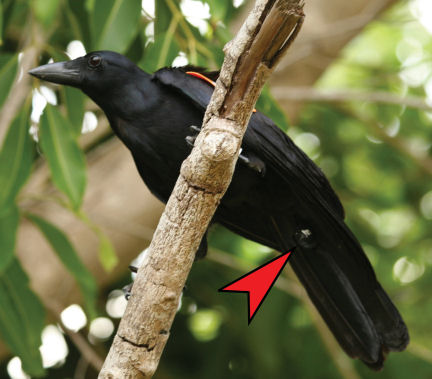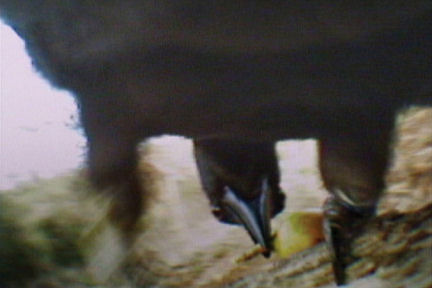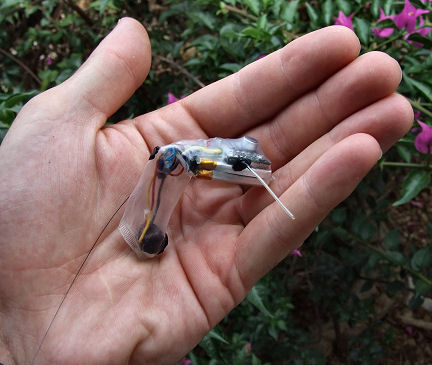Biologists studying tool use in a tropical crow species have fastened tiny video cameras to the birds and recorded their search for food.



“We are the first ones to do this on wild birds,” says Christian Rutz of the University of Oxford in England. He and his Oxford colleagues attached cameras to the tail feathers of New Caledonian crows so that the devices look forward between the birds’ legs. The system, which can transmit video to a receiver several hundred meters away, appears to let the crows forage normally in their rugged forest habitat, Rutz says.
The researchers downloaded some 38 minutes of video from each of 12 birds, until the cameras’ batteries died. Videos included scenes of the birds probing for food with plant stems.
“I think this approach has an amazing future,” says physiological ecologist Martin Wikelski of Princeton University. The crow work “is very preliminary, obviously,” he says. Yet the history of studying animals shows that “as soon as you monitor them remotely you find them doing things you never knew they were doing before.”
Rutz credits pioneering “crittercam” research to Greg Marshall, now the in-house specialist for remote imaging at the National Geographic Society in Washington, D.C. In 1986, Marshall worked out a way to hitch a camera onto the back of a captive loggerhead turtle. Since then, he says, he and other people have wired at least 63 species, about half for research and the others in equipment tests or filmmaking projects.
Marshall says that researchers try to keep the weight of any equipment on an animal to 5 percent or less of its body weight, making it hard to equip small animals. “It’s predominantly a battery issue,” he says.
Cell phone makers are shrinking cameras, Rutz notes. Using new components, the Oxford team slimmed its video system down to 13 grams, not quite as heavy as three nickels.
The crow Corvus moneduloides, native to New Caledonia in the South Pacific, makes a worthy bearer of cameras, says Rutz. The crows make several types of hooks and saw-edged probes from twigs and leaves. They use the tools to work insects out of hard-to-reach places (SN: 3/22/03, p. 182). Rutz says that some questions can be answered only with details of crows’ daily life in the wild. For example, he’d like to know whether foraging is such hard work for the crows that it favors their unusual talent for gadgetry.
Video recordings can help answer such questions, he says. For example, images collected thus far show that crows on the ground pick up only 8 bits of food an hour, he and his colleagues report online and in an upcoming Science.
Gavin Hunt of the University of Auckland in New Zealand, the first researcher to report the sophistication of crow tools in the wild, cautions that some of the reported video discoveries aren’t that new. A video recording of a crow reusing a tool repeats a finding he reported in 1996 that came from nonelectronic observations in the wild, he says.






